18 Delicious Edible Backyard Weeds

Make sure to like Living Green and Frugally on Facebook, Shop at amazon to help support my site and explore our PINTEREST BOARDS for innovative ways you can become self-sufficient.
In the quest for a perfectly manicured lawn or garden, many of us overlook a treasure trove hidden in plain sight: backyard weeds. While these resilient plants are often viewed as nuisances to be eradicated, they actually offer a bounty of nutrition and flavor. By broadening our culinary horizons and embracing these edible weeds, we not only reduce waste but also tap into a sustainable food source that is both free and abundant. Here are 18 backyard weeds that deserve a place on your plate:
- Dandelion (Taraxacum officinale): Often seen as a pesky intruder, dandelions boast edible flowers, leaves, and roots. Their leaves add a tangy bite to salads, while the flowers can be used to make dandelion wine or fried for a crispy treat. Harvest and Use Dandelion Roots
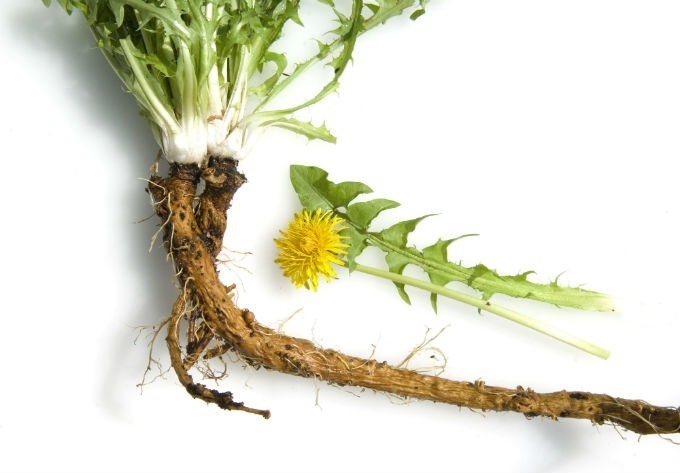
Harvest and Use Dandelion Roots / shutterstock - Chickweed (Stellaria media): With a mild, spinach-like flavor, chickweed is rich in vitamins and can be enjoyed raw in salads or cooked in soups and stir-fries.
- Nettle (Urtica dioica): Despite its stinging reputation, nettle leaves are a nutritious powerhouse, packed with vitamins and minerals. Once cooked, they lose their sting and can be used in recipes ranging from pesto to tea.
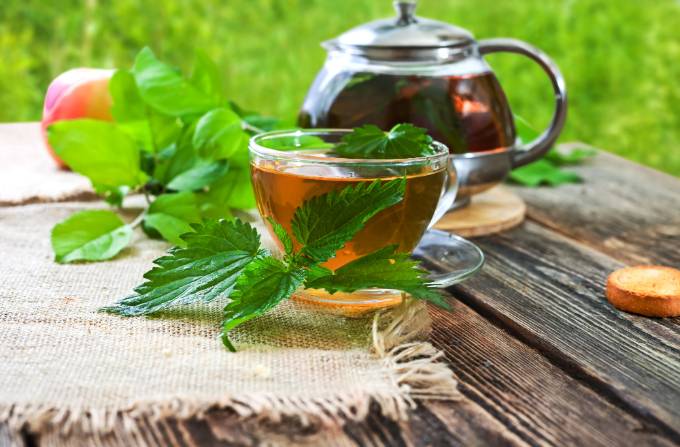
Nettle Tea /shutterstock - Purslane (Portulaca oleracea): This succulent weed is high in omega-3 fatty acids and antioxidants. Its crunchy texture and slightly tangy flavor make it a great addition to salads and sandwiches.
- Lamb’s Quarters (Chenopodium album): Often mistaken for spinach, lamb’s quarters have a mild, earthy flavor reminiscent of their cultivated counterpart. They can be used interchangeably in recipes calling for spinach or cooked into dishes like quiches and pasta.
- Plantain (Plantago major): Not to be confused with the banana-like fruit, plantain leaves are edible and offer a slightly bitter taste. They can be used fresh in salads or cooked in soups and stews.
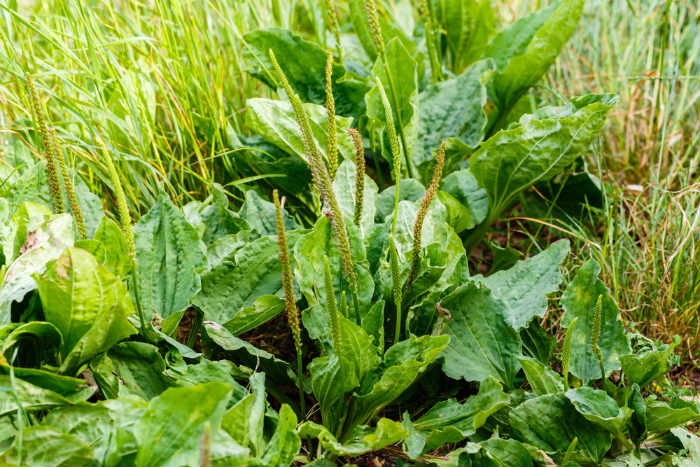
Plantain /shutterstock - Clover (Trifolium spp.): Clover flowers are not only visually appealing but also edible, with a sweet, slightly floral flavor. They can be used to garnish desserts or infused into syrups and teas.
- Japanese Knotweed (Fallopia japonica): Despite its invasive nature, Japanese knotweed shoots are tender and delicious when harvested young. They can be cooked like asparagus or pickled for a unique twist.
- Burdock (Arctium lappa): Known for its deep roots, burdock is also prized for its crunchy stalks and earthy flavor. It can be enjoyed raw in salads or cooked into dishes like stir-fries and soups.
- Wild Garlic (Allium vineale): Resembling chives, wild garlic boasts a pungent flavor that adds depth to dishes. Its leaves and bulbs can be used in place of cultivated garlic in various recipes.
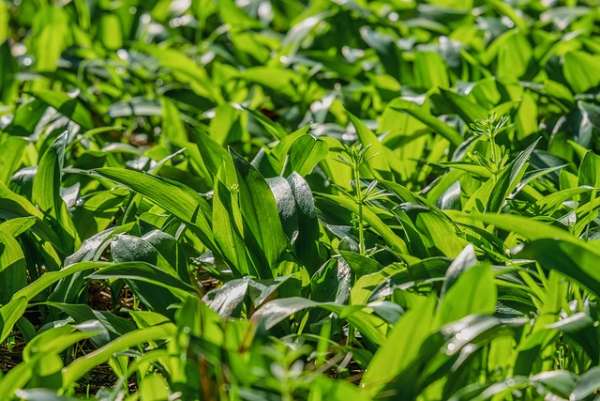
Wild Garlic / Image from Pixabay - Mallow (Malva spp.): Mallow leaves have a mild, spinach-like taste and a mucilaginous texture that lends itself well to soups and stews. They can also be used as a thickening agent in sauces.
- Borage (Borago officinalis): With its vibrant blue flowers and cucumber-like flavor, borage is as beautiful as it is tasty. Its flowers make a stunning addition to salads and desserts, while its leaves can be used in soups and teas.
- Chicory (Cichorium intybus): Chicory leaves offer a slightly bitter taste that pairs well with sweet and tangy flavors. They can be enjoyed raw in salads or cooked into dishes like risotto and gratins.
- Wood Sorrel (Oxalis spp.): With its lemony flavor, wood sorrel adds a refreshing zing to salads and sauces. Its leaves can also be brewed into a tart tea or used to garnish cocktails.
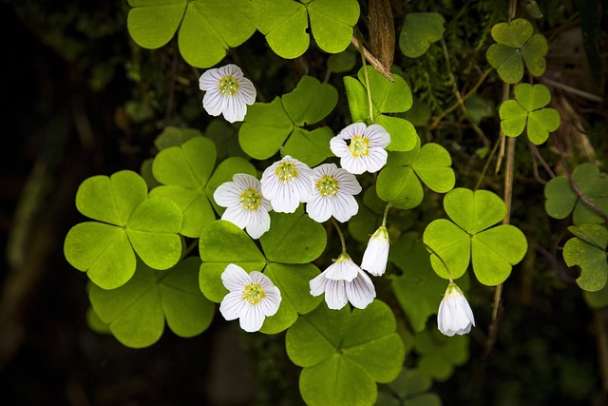
Wood Sorrel / Image from Pixabay - Pineapple Weed (Matricaria discoidea): Resembling miniature pineapples, pineapple weed flowers are edible and offer a subtle pineapple-like flavor. They can be used to infuse vinegar or brewed into a fragrant tea.
- Sorrel (Rumex acetosa): Sorrel leaves have a tangy, slightly sour flavor that adds brightness to dishes. They can be used raw in salads or cooked into soups, sauces, and savory pies.
- Ground Ivy (Glechoma hederacea): Also known as creeping Charlie, ground ivy has a minty flavor that can be used to add a fresh twist to salads, smoothies, and cocktails.
- Wild Mustard (Brassica spp.): Wild mustard greens have a spicy, peppery taste similar to arugula. They can be enjoyed raw in salads or cooked into dishes like sautés and omelets.
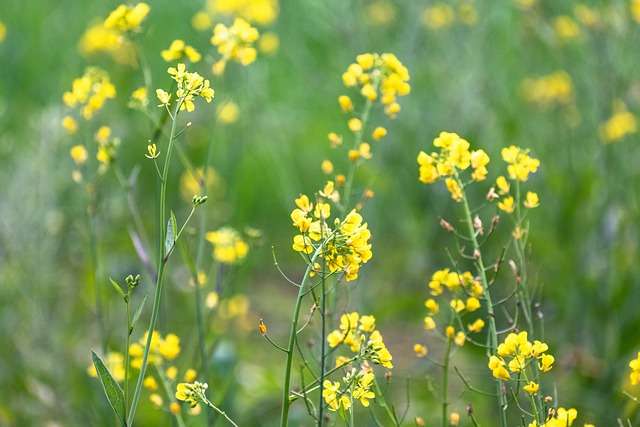
Wild Mustard / Image from Pixabay
Before foraging for backyard weeds, ensure proper identification to avoid accidental ingestion of toxic plants. Additionally, harvest weeds from areas free of pesticides and other contaminants.
By incorporating these edible backyard weeds into our diets, we not only expand our culinary repertoire but also foster a deeper connection with the natural world around us. So, the next time you’re tempted to reach for the weed killer, consider reaching for a fork instead and savoring the flavors of nature’s bounty right in your own backyard.